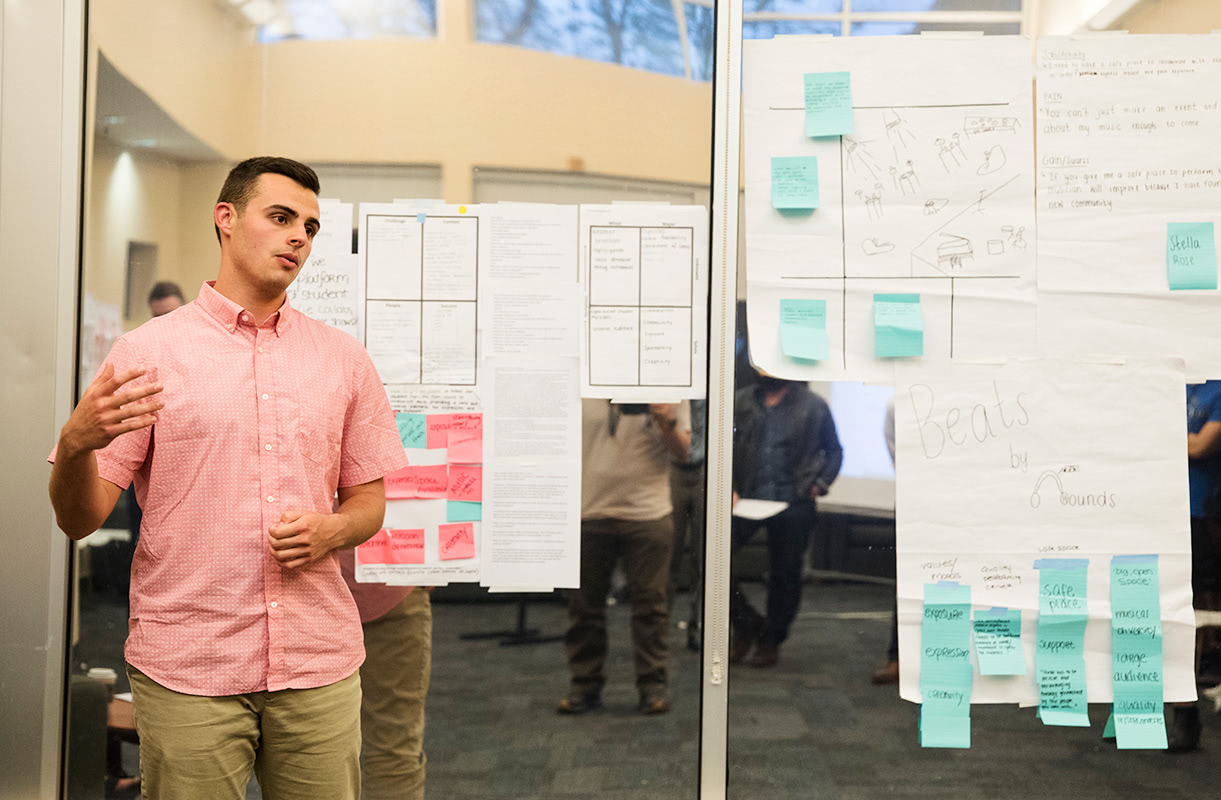
Creativity that leads to change
Design thinking course helps student entrepreneurs bring ideas to life

Bill Romani, Ph.D., doesn’t just want his students to be creative thinkers; he wants them to develop ideas that will result in transformative social change. That’s why Romani, Loyola’s inaugural entrepreneur in residence, created Design Thinking and Innovative Solutions, a required course for students pursuing a minor in innovation and entrepreneurship.
“First and foremost, we want our students to be well-grounded in innovation and entrepreneurship,” says Romani, who oversees the academic offerings in Loyola’s new Center for Innovation & Entrepreneurship.
“What Loyola brings to what is becoming a crowded marketplace is the focus on human-centered values and social entrepreneurship. Our commitment to social justice and the humanities means this isn’t a mindset we need to build here—it’s who Loyola is.”
Unlocking potential
The fundamentals of the course are grounded in the core principles of design thinking and creative confidence that are the keys to unlocking the potential of explorers and experimenters. Romani’s students learn to develop their creativity through readings as well as journaling and reflection papers.
It’s important for students to apply the Jesuit value of discernment and understand their values and strengths when they’re looking to create solutions.
His course emphasizes communication not only as a means to express one’s ideas, but also as a vital skill to build consensus among diverse groups and divergent opinions. Romani challenges students to consider design thinking in urban environments, where understanding social justice issues is important. Readings range from “The Hard Truth About Innovative Cultures,” published in the Harvard Business Review, to the seminal essay “White Privilege: Unpacking the Invisible Knapsack” by scholar and activist Peggy McIntosh.
From abstract to concrete
A unique component of the course is its requirement that students build actual models of their solutions, such as sketches on a storyboard or prototypes made of clay or even LEGOs. Moving an idea to a product is where many entrepreneurs get stuck. Consequently, Romani teaches students hands-on techniques so that they can push through these kinds of roadblocks.
“When you actually build something and see it and get feedback from your user, you’re engaged in a process of iteration that will continually make your project bigger,” Romani explains. “If you’re just writing a paper, you’re guessing. Most of what you put in the paper is an assumption, and there’s no way to go back and iterate it except conceptually.”
A distinctive approach
Students can draw on Loyola’s resources, such as the new Lange Innovation Lab and the Clinical Centers at Belvedere Square, to connect with real end users. For example, there’s a project examining job competency for underserved public high school robotics students who choose not to attend college. These end users, Romani notes, can provide constructive feedback to make the solutions stronger—and their creators braver.
“My hope is that students develop and increase confidence in their own creativity and their ability to take chances and do things outside the box,” he says. “They really need to be aware of a different way of thinking and have the competence and confidence to use it to develop remarkable human-centered solutions.”